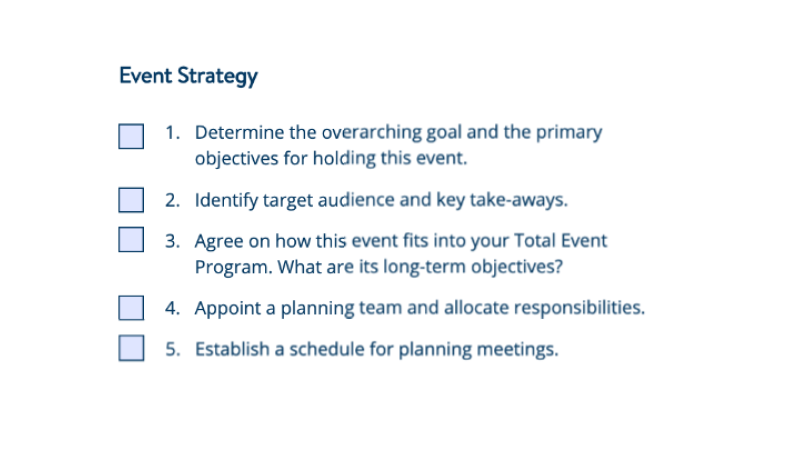Event photography is challenging work. You're chasing moments in crowded spaces with unpredictable lighting.
These practical event photography tips will help you capture the complete story of any event, from the big highlights to those quiet, meaningful moments that make the day unique.
1. Know your equipment inside out
When you're shooting an event, there's no time to fumble with camera settings. That candid laugh or emotional speech won't happen again for your benefit. So, our first event photography skill is to know your equipment like the back of your hand. The better you're at it, the more you can focus on capturing experiences rather than worrying about technical details.
You can start by practicing changing settings without looking at your camera. Get comfortable switching between modes and adjusting ISO, aperture, and shutter speed quickly. This muscle memory will be crucial when you're working in dark venues or need to respond to sudden photo opportunities.
2. Master low-light photography
Different events happen in different lighting conditions. Wedding receptions, product launch events, corporate dinners, and concert venues often have dim, atmospheric lighting that looks great to the eye but can be a nightmare for your camera.
Invest in "fast" lenses with wide apertures (f/2.8 or wider) that allow more light to reach your sensor. Modern cameras handle higher ISO settings much better than older models, so don't hesitate to push to ISO 3200 or even 6400 if it means getting the shot. Learn how to use flash effectively so you don’t have to deal with direct flash that can create harsh shadows and unflattering light. One technique is bouncing flash off walls or ceilings when possible. This creates softer, more natural lighting that flatters your subjects.
In outdoor events, bring a portable diffuser to soften direct sunlight or fill flash to reduce harsh shadows. Remember that a slightly noisy photo is always better than a blurry one. You can reduce noise in editing, but you can't fix motion blur or missed focus.
3. Arrive early and scout the venue
Show up at least 30 minutes before an event starts to check the venue layout, identify the best shooting positions, test lighting in different areas, and take detailed shots before guests arrive. This is one of the most valuable indoor or outdoor event photography tips to remember, as you'll need to identify shaded areas and potential glare issues and track the sun's movement throughout your shooting time.
During this time, understand the event management team’s efforts, like decorations, stage, venue setup, and other details that they worked hard to create. These scene-setting shots provide valuable context in your final image collection.
Walking the space beforehand also helps you plan your approach. You'll know where key moments will happen, where lighting might be tricky, and how to position yourself throughout the event.
4. Create a shot list, but stay flexible
Work with your client before the event to develop a list of must-have photos that they may use for event marketing. Corporate events might include key speakers, award presentations, branded signage, networking interactions, and group shots of leadership teams. These corporate event photography tips are essential when working with business clients who often have specific event branding requirements and stakeholder expectations.
The list for social events like weddings or parties is different. It might have special moments and key guests, so making a list like this ensures you don't miss the shots your client is counting on. At the same time, don't get so attached to your list that you miss spontaneous moments. Some of the most powerful event photos happen when you capture unplanned interactions.
5. Take candid pictures
While posed group shots have their place, candid, in-the-moment photos truly capture the energy and emotion of an event. Look for genuine laughter and smiles, people engaged in conversation, dance floor moves, emotional reactions, and speaker gestures. These pictures tell what it felt like to be there, not just who attended, and are great for event promotion.
For instance, capture the speaker's hand gestures and facial expressions in a corporate event to emphasize their points. At social events, focus on interactions between guests that show the atmosphere and energy of the occasion.
To take candid pictures, position yourself where you can capture reactions and expressions as they happen naturally. Sometimes, this means waiting patiently for moments to unfold rather than constantly moving around.
6. Use the right camera settings
Every event presents unique conditions, so adjust your settings accordingly. For typical indoor events, use an aperture around f/2.8-4 and set your camera on wider settings for individual shots and narrower ones for groups so everyone's in focus. Keep your shutter speed at least 1/60s to freeze motion, going faster for active scenes like dancing.
Use natural light in the mid-day outdoor events, but watch for harsh shadows. Always use fill flash, even on sunny days, to reduce shadows under eyes or hats. White balance becomes crucial when dealing with mixed lighting sources like early evening and venue lights. Auto white balance works well in many situations, but for consistent results, consider setting a custom white balance at the venue.
7. Move around and change perspectives
Don't get stuck in one position. Move around the venue to capture different angles and perspectives. Shoot from higher positions for crowd scenes or get low for dynamic dance floor pictures. Use doorways and architecture as natural frames. Find quiet moments in corners away from the main action.
Don't be afraid to crouch, stretch, or find elevated positions. Each new angle can reveal something different about the same scene.
Event photography etiquette
As a professional photographer, you must work closely with the event planning team. That means you need to follow their guidelines and etiquette, including:
Dress appropriately
For most events, dark, neutral clothing works best, typically black or dark gray. It helps you blend in rather than draw attention to yourself. Wear comfortable, quiet shoes since you'll be on your feet for hours, and squeaky shoes can be disruptive during quiet moments. It’s best to clarify dress expectations with the event management team beforehand. Some events might require more formal attire to match the audience.
Be present but not obtrusive
The challenge of event photography is being present where the action is without becoming part of it. Move quietly through the space, anticipating experiences before they happen. When photographing speakers or performances, position yourself so you won't block the audience's view. Take a few shots, then move to another angle rather than staying in one spot too long. The best event photographers seem almost invisible while still capturing everything necessary. Being respectful of the space means guests can enjoy themselves without feeling like they're on a photo shoot.
Respect personal boundaries
Some moments, such as people eating, private emotional moments, and anyone who has indicated they don't want their photo taken, shouldn't be photographed. Utilize this time to check your shots, change batteries, or reposition for upcoming activities. Being sensitive to these boundaries builds trust with your clients and their guests. Remember that your job is to document the event, not interrupt it. When in doubt about whether to take a photo, err on the side of respect.
Coordinate with other suppliers
Events often involve multiple vendors: videographers, DJs, caterers, and onsite solutions providers. Introduce yourself and understand everyone's needs, particularly videographers. With them, establish a mutual understanding about positioning to avoid getting in each other's shots. Remember, you're all working toward the same goal, which is to make the event successful and memorable.
Frequently asked questions
If you're still wondering about the best ways to capture unforgettable moments at your events, we've got you covered. Here are some frequently asked questions that could benefit both amateurs and professionals.
What are some good basic tips to prepare for photographing an event?
Start by talking to your client. Get clear on what they expect, when key moments will happen, and who needs to be in photos. Create a shot list together. If possible, visit the venue before the event. You'll spot potential problems and identify the best shooting spots. Clean your lenses, format memory cards, and charge batteries the night before. Pack backups of everything essential: camera, flash, batteries, and memory cards.
On event day, arrive early to set up. Introduce yourself to key staff members. Take test shots to check lighting conditions. Review your list and event timeline one more time. This thorough prep work clears your mind and allows you to be creative during the event instead of worrying about logistics.
Are there any best practices for editing my event photos?
First, back up your images. Next, scan through for standout shots. These are the gems you might share right away. Then get tough with your culling: Delete the bad shots. If it's blurry, too dark, or someone's eyes are closed—trash it.
When you have similar shots, pick the best version. If you have five photos of the same group, keep only the one in which everyone looks good. Sort your keepers into categories to make the editing flow faster.
Edit for consistency. To make your corporate event photography look professional, keep colors and exposure similar across all images. But don't overdo it. Simple adjustments to exposure, contrast, and color usually work best. People want to look like themselves—just on a good day.
And finally, deliver quality, not quantity. Your clients would rather have 300 amazing photos than 1,000 mediocre ones.
Photographing an event to remember
A picture is worth a thousand words...but only when your camera tells the right story. Event photography combines technical skills, artistic vision, and people skills. The best photographers read the room, spot occasions before they happen, and tell stories through their lens.
For outdoor event photography, watch how the sun and weather change throughout the day. For corporate event photography, balance professionalism with finding genuine interactions.
Next time you shoot an event, plan ahead, but stay flexible. Sometimes, the best pictures often come from unexpected moments that no shot list can predict.











